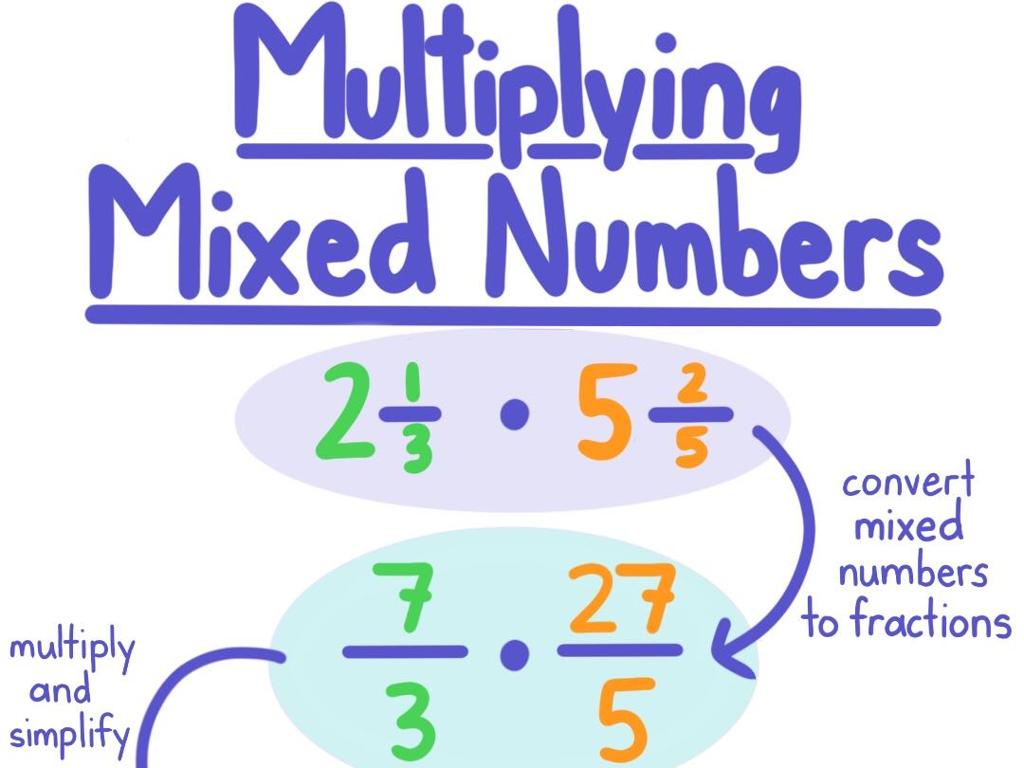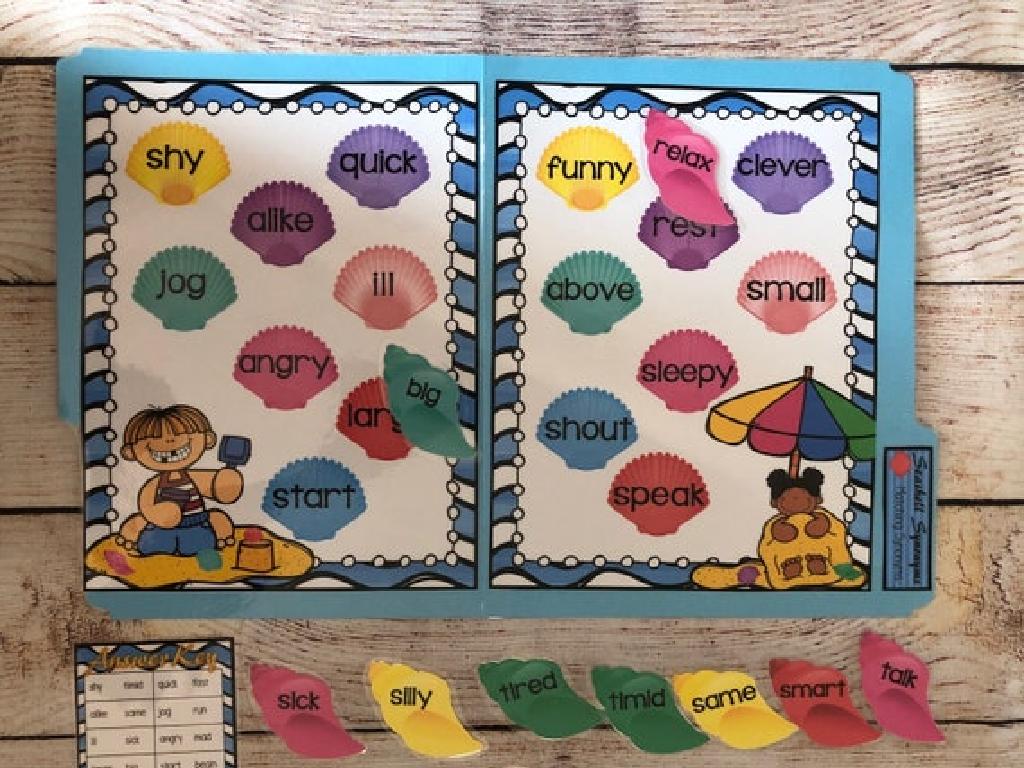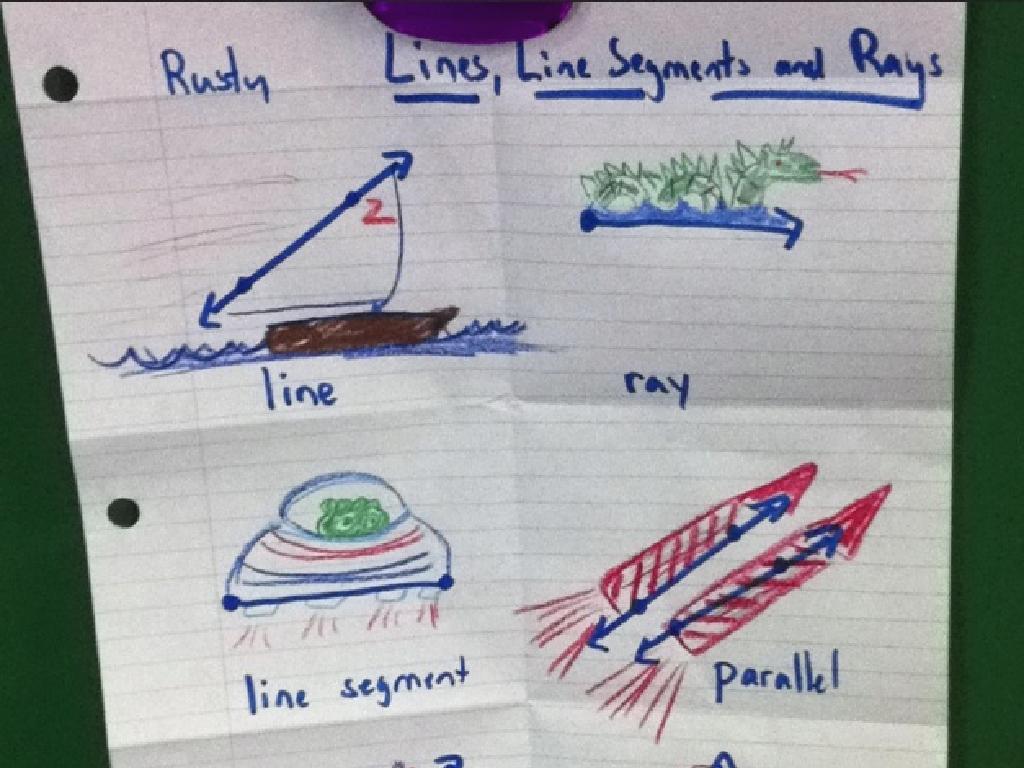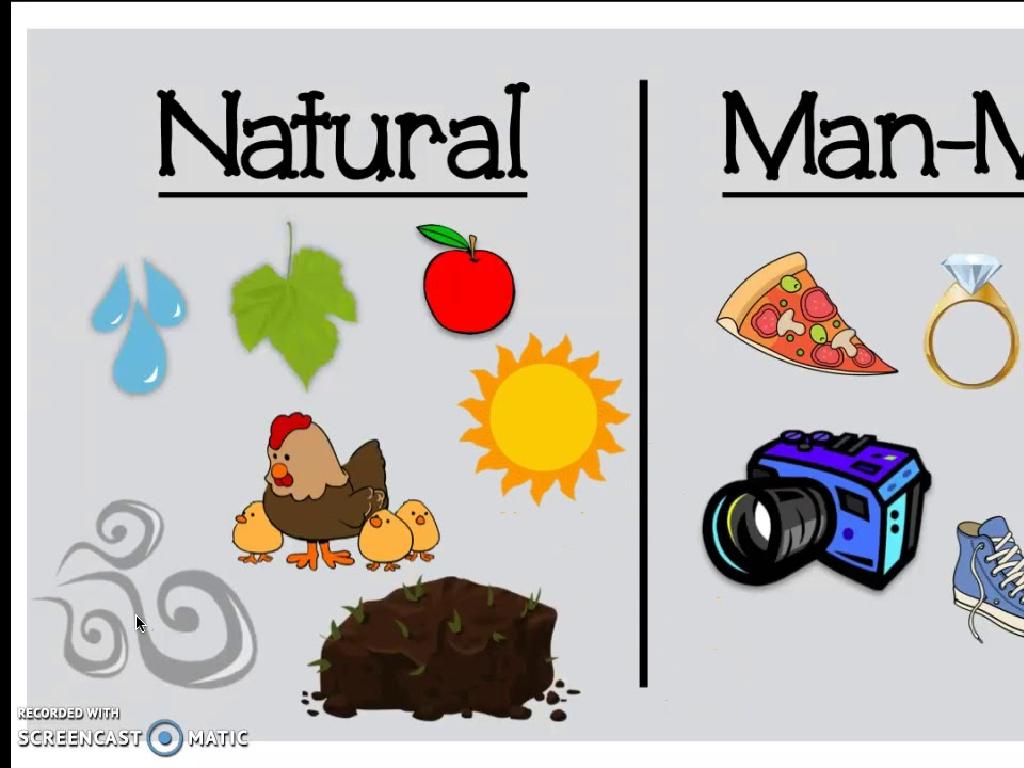Multiply And Divide Integers
Subject: Math
Grade: Seventh grade
Topic: Operations With Integers
Please LOG IN to download the presentation. Access is available to registered users only.
View More Content
Multiplying and Dividing Integers
– What are integers?
– Integers include positive, negative numbers, and zero
– Rules for multiplying integers
– Same signs multiply to positive, different signs to negative
– Rules for dividing integers
– Same rules as multiplication for sign results
– Applications in real life
– Use in temperature changes, finances, and elevations
|
This slide introduces students to the concept of integers and focuses on the rules for multiplying and dividing them. Integers are the set of whole numbers and their opposites, including zero. When multiplying integers, if the signs are the same, the result is positive; if the signs are different, the result is negative. The same sign rules apply to division. Real-life applications of these operations include calculating temperature changes (e.g., from positive to negative degrees), understanding gains and losses in finances, and determining changes in elevations below and above sea level. Encourage students to think of additional examples where they encounter integers in their daily lives.
Understanding Integers
– Define integers
– Integers include whole numbers and their negatives
– Examples of integers
– Positive: 1, 2, 3; Negative: -1, -2, -3
– Zero: An integer
– Zero is neutral, neither positive nor negative
– Integers in operations
|
Integers are the set of whole numbers including the negative of natural numbers, zero, and the positive natural numbers. They do not include fractions or decimals. When introducing integers, provide clear examples of positive and negative integers, and emphasize that zero is also considered an integer, which acts as a neutral number in operations. It’s important to highlight that understanding integers is fundamental before moving on to operations with them, such as multiplication and division. Use number lines and real-life scenarios, like temperatures above and below zero, to illustrate the concept. This will set the stage for learning how to multiply and divide integers.
Rules for Multiplying Integers
– Multiply two positive integers
– The product is positive, e.g., 3 x 4 = 12
– Multiply two negative integers
– The product is positive, e.g., (-3) x (-4) = 12
– Positive times a negative integer
– The product is negative, e.g., 3 x (-4) = -12
– Multiplication rules summary
|
When multiplying integers, the sign of the result depends on the signs of the numbers being multiplied. Multiplying two positive integers or two negative integers always yields a positive product. However, when a positive integer is multiplied by a negative integer, the result is negative. This slide aims to solidify the understanding of these rules through clear examples. Encourage students to practice with additional examples and to remember the key rule: the product of integers with like signs is positive, and with unlike signs is negative.
Multiplying Integers
– Multiply positive by negative
– Example: 7 x -3 = -21
– Multiply two negative integers
– Example: -5 x -4 = 20
– Class practice with examples
– Solve problems: 8 x -2, -6 x -7
– Understand rules for multiplication
|
This slide focuses on the multiplication of integers, a key concept in 7th-grade math. Start by explaining that multiplying a positive by a negative integer results in a negative product, as shown in the first example. Then, illustrate that the product of two negative integers is positive, using the second example. During class practice, provide students with additional problems to solve, reinforcing the rules of multiplication. Emphasize that the sign of the product changes depending on the signs of the numbers being multiplied. Encourage students to remember that ‘a negative times a positive equals a negative’ and ‘a negative times a negative equals a positive’.
Rules for Dividing Integers
– Dividing two positive integers
– The quotient is positive
– Dividing two negative integers
– The quotient is positive
– Positive divided by negative
– The quotient is negative
– Negative divided by positive
– The quotient is negative
|
When dividing integers, the rules are straightforward. If both integers are positive or both are negative, the result is a positive integer. For example, 8 ÷ 2 = 4 and (-8) ÷ (-2) = 4. However, if you divide a positive integer by a negative integer or vice versa, the result is a negative integer. For instance, 8 ÷ (-2) = -4 and (-8) ÷ 2 = -4. It’s crucial for students to understand these rules to correctly solve division problems involving integers. Practice problems can include a mix of these scenarios to ensure students can apply the rules in different contexts.
Dividing Integers
– Divide negative by positive
– Example: -24 ÷ 6 = -4
– Divide positive by negative
– Example: 32 ÷ -8 = -4
– Steps for division with integers
– Class practice problems
|
This slide focuses on the division of integers, specifically dividing negative integers by positive ones and vice versa. Start by explaining that the division is similar to multiplication regarding the sign rules. A negative divided by a positive or a positive divided by a negative both yield a negative result. Provide the class with the steps for dividing integers: determine the sign of the answer, divide the absolute values, and apply the sign. After the explanation, engage the students with practice problems to solve as a class. This will help solidify their understanding and give them the opportunity to ask questions in real-time. Prepare several example problems of varying difficulty for the students to solve, ensuring they grasp the concept of integer division.
Understanding Signs in Multiplication and Division
– Rules for multiplying integers
– Multiply or divide numbers and observe the sign of the result
– Rules for dividing integers
– Same signs result in a positive, different signs result in a negative
– Sign rules determine the answer’s sign
– Interactive sign rule activity
– Engage with an activity to apply sign rules
|
This slide introduces the fundamental rules for determining the sign of an answer when multiplying or dividing integers. Emphasize that if the signs of the two numbers are the same, the result is positive, and if the signs are different, the result is negative. Use examples like (-2) * (-3) = +6 and (-2) * (+3) = -6 to illustrate the concept. The interactive activity should involve students working through a series of multiplication and division problems with integers to reinforce their understanding of sign rules. Possible activities include a matching game with equations and their correct signs, a ‘sign hunt’ where students find and solve problems around the classroom, or an online quiz that provides instant feedback on their answers.
Group Activity: Integer Operations
– Split into groups for problem-solving
– Solve assigned integer operation problems
– Focus on multiplication and division of integers
– Each group presents their solutions
– Explain the reasoning behind your answers
– Share strategies used to arrive at the solution
|
This group activity is designed to foster collaborative learning and enhance students’ understanding of multiplying and dividing integers. Divide the class into small groups and assign a set of integer operation problems to each. Encourage students to discuss different strategies and work together to solve the problems. After solving, each group will present their solutions to the class and explain the reasoning behind their answers. This will help students learn from each other and clarify their understanding. As a teacher, facilitate the discussions, ensure each group participates, and provide guidance as needed. Possible activities could include solving word problems, finding the product of positive and negative integers, or dividing integers to see patterns in signs.
Class Activity: Integer Operations in Real Life
– Apply integer operations to real scenarios
– Pair up and solve integer multiplication
– Find product of temperatures below zero
– Tackle integer division problems together
– Divide debts or profits in business examples
– Discuss solutions and methods used
|
This activity is designed to solidify students’ understanding of multiplying and dividing integers through practical application. Students will work in pairs to solve problems that mimic real-life situations, such as calculating temperature changes and managing finances. Provide a variety of scenarios to ensure that students can apply the concepts in different contexts. Encourage them to discuss their problem-solving strategies and the rules they applied to reach their solutions. Possible activities: 1) Multiplying negative temperatures to predict extreme weather patterns. 2) Dividing a profit among business partners. 3) Calculating elevation changes in hiking. 4) Balancing a checkbook with deposits and withdrawals.
Wrapping Up: Multiplication & Division of Integers
– Recap: Rules for multiplying integers
Remember the sign rules: Positive x Positive = Positive, Negative x Negative = Positive
– Recap: Rules for dividing integers
Same rules apply: Positive ÷ Positive = Positive, Negative ÷ Negative = Positive
– Homework: Practice worksheet
Complete the provided worksheet to reinforce today’s lesson
– Next class: Review homework answers
|
As we conclude today’s lesson on multiplying and dividing integers, remind students of the key rules for determining the sign of the answer. For multiplication and division, the product or quotient of two integers with the same sign is positive, while different signs result in a negative answer. Assign the practice worksheet for homework to solidify their understanding, ensuring they attempt a variety of problems. In the next class, we will go over the homework answers, addressing any common mistakes or misconceptions. Encourage students to try their best on the worksheet and to bring any questions they have to the next class.






